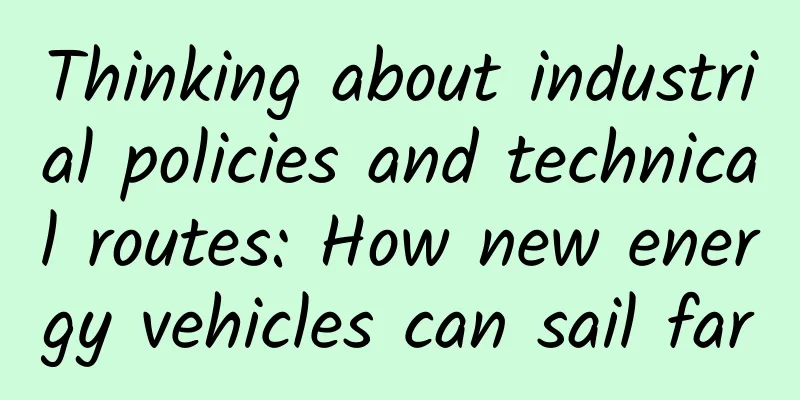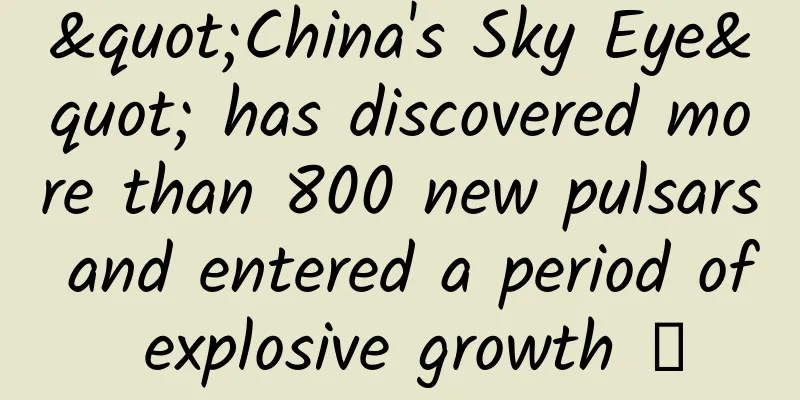Thinking about industrial policies and technical routes: How new energy vehicles can sail far

|
As we all know, the new energy vehicle industry experienced several ups and downs in 2016. The results of the investigation into subsidy fraud led to multiple market turbulences. At the same time, the subsidy policy was uncertain and difficult to implement. In addition, the release of the "Energy-Saving and New Energy Vehicle Technology Roadmap", the issuance of licenses for new new energy vehicle manufacturers, and the acceleration of cross-border vehicle manufacturing by Internet companies have made the entire new energy vehicle industry filled with a mixture of two contradictory emotions: hesitation and forging ahead. Now that the end of the year is approaching, can the new energy vehicle market achieve its expected goals, and how will it break through? Adhere to the pure electric drive route New energy "three-dimensional" development At present, China's new energy vehicle industry is in a transitional period of development. After several twists and turns, the development of domestic automobile power electrification is gradually getting better. The "Energy-Saving and New Energy Vehicle Technology Roadmap" released not long ago reclassified hybrid vehicles as one of the key directions for future industrial development, which once again aroused the long-standing discussion on "betting" on pure electric drive as the core technology route - to put it more directly, whether hybrid technology represented by Toyota, which has obvious cost advantages and maturity, is suitable for the promotion of new energy vehicles in China. "If China follows the Toyota model, I think there will be no way out, because we are not on the same order of magnitude." Regarding this issue, Professor Ouyang Minggao of the Department of Automotive Engineering at Tsinghua University made it clear in his speech at the forum that my country's new energy vehicles should adhere to the development path of pure electric drive. In his opinion, China's model is to take the lead in pure electric vehicles, and drive the battery industry to become the world's largest through the expansion of pure electric scale. "Now we have become the world's largest battery industry. I won't say the strongest, but we are in the top three." On this basis, we use pure electric as a platform to make plug-in hybrid vehicles, which is exactly the opposite path of Toyota's promotion of hybrid vehicles first. The advantage is that "during this period, we can use national subsidies to gradually enhance our competitiveness, and use the advantages of batteries to significantly reduce costs and increase lifespan." Ouyang Minggao also gave his own interpretation of the "Energy-saving and New Energy Vehicle Technology Roadmap", believing that the core of new energy vehicles is "three transformations": power electrification, body lightweighting, and vehicle intelligence. These "three transformations" must be integrated with three other technical trends: power electrification integrates low-carbon energy, body lightweighting integrates manufacturing ecology, and vehicle intelligence integrates transportation networking, so as to achieve technical upgrades of deep power electrification, body chassis lightweighting, and vehicle intelligent networking. "At present, everyone is talking about electrification and intelligence, but lightweighting of the body is also a technological change that is equally important as the two. What is connected to it is the ecological manufacturing, that is, all the contents of Industry 4.0 are related to lightweighting of the body." Power electrification and vehicle intelligence are now receiving a lot of attention, but Ouyang Minggao particularly emphasized that lightweighting of the body has not received corresponding attention. Regarding the trend of lightweighting of the body, Ouyang Minggao pointed out that this technological innovation is not only a change in the body material, but also a subversion of the chassis structure and manufacturing process. At the same time, concepts such as personalized body customization and artificial intelligence manufacturing have gradually emerged, which makes the development of lightweight body technology closely integrated with the entire ecosystem of automobile manufacturing. He took the lightweight, carbon fiber BMW i3 as an example, pointing out that "the traditional load-bearing body has no chassis. Now the chassis has appeared, and the body is remade, not necessarily a completely load-bearing body. The material and manufacturing process of the body have all changed. All the processes of the car factory will undergo revolutionary changes in the next 20 to 30 years." Regarding the intelligentization of automobiles, Ouyang Minggao said that autonomous vehicles and vehicle networking are two dimensional technical directions, but the two should be developed in combination. In his opinion, the biggest purpose of vehicle networking is to achieve active safety, and it is expected that conditional autonomous driving will be achieved by 2020 and highly autonomous driving will be achieved by 2025. Three significant effects The formation of depression effect When the development route goes first, industrial policy will inevitably follow. At present, the policies related to my country's new energy industry have been turbulent for several times, whether it is complete vehicles, batteries, or charging piles. In view of the current development of the new energy vehicle industry, Li Qingwen, vice president of the China-Europe Association for Economic and Technical Cooperation and president of the Autonomous Automobile Industry Branch, believes that "the new energy vehicle industry still needs strong policies, correct, effective, and truly problem-solving, systematic, stable and predictable policies. If we leave these policies at this stage, the efforts made before may be abandoned halfway, and we may also lose the current good situation." In Li Qingwen's view, new energy vehicle technology is productivity, and industrial policy is the supporting condition. "Only with the supporting conditions required by productivity can productivity be turned into actual production capacity and become the competitiveness of China's new energy vehicle industry." Regarding some negative comments from the public and the industry on the current new energy vehicle industry policy, Li Qingwen believes that blindly criticizing and questioning is biased, because there are at least three achievements of the industrial policy that can be seen now. First, the new energy industry policy has made the sales of my country's electric vehicles and new energy vehicles, like traditional vehicles, occupy the first place in the world. This objective reality cannot be denied. "In any case, we cannot negate the struggle and efforts of the entire industry with just one sentence or a simple negation." Li Qingwen pointed out that due to the historical reasons of the low starting point of the automobile industry, and the fact that it takes time to accumulate technology and products, the new energy automobile industry cannot become the strongest in the world from the beginning. The realistic development path is to grow big first and then become strong. Second, the new energy industry policy has led to the emergence of a number of new energy and electric vehicle companies with vitality and vigor in China. In the past decade, they have grown to have a place in the global market. For example, BYD has developed to where it is today through self-innovation under the premise that the market determines resource allocation. Without the market environment for the development of electric vehicles in China created by the policy, BYD would not have become a company with a strategic position and importance in the world's automobile industry, especially the new energy automobile industry; without the development of the Chinese electric vehicle industry, it would not have been possible to produce Chinese battery companies such as Mingde Times that can compete with world-class battery companies in the battery field. Third, the new energy industry policy has made China a resource depression for new energy vehicles and electric vehicles in the world. Various new energy vehicle industry resources in the world have begun to gather in China. Whether in Europe or North America, the technology, talents, and capital surrounding electric vehicles and new energy vehicles are flowing to China, and the depression effect on resource concentration has already occurred. Li Qingwen bluntly stated that many developed countries' automobile companies, including Volkswagen of Germany, are undergoing fierce strategic transformation, one of the characteristics of which is to increase their layout in China. "At present, I see that the speed at which the resources and various elements of the world's automobile industry are flowing to China is accelerating." Policies lack systematicity Industrial development requires forward-looking planning "Today we have such a foundation, and we should be pleased that China has not fallen behind in this round of world industrial revolution. We have made huge investments in technology, have accumulated a lot, and have made a lot of achievements and outputs. We cannot deny the efforts and achievements made by China's engineering and technical personnel and scientific and technological personnel in accordance with the guidance of national industrial policies and national strategies." However, while affirming the importance and necessity of new energy industry policies, Li Qingwen also pointed out that the relationship between the guidance and operability of industrial policies in the past was not well sorted out, and the systematic nature of the policies was flawed. He believes that the industry's guidance was done well in the early stage, but there are too many random, temporary and fragmented phenomena in the operation of industrial policies. Many factors that are not related to industrial demand have caused strong interference, such as the misalignment of central and local policies. Subsidy policy is a typical example. The central government's subsidy policy is very clear, but local governments have no plan or timetable when issuing corresponding details, which makes enterprises anxious and helpless. This view was endorsed by Yan Chen, CEO of Shenzhen BYD New Energy Automobile Co., Ltd., a representative of the new energy vehicle field. This year, the new energy vehicle market was affected by the "subsidy fraud case", and the industry development has changed from the initial "blowout" to "stability". With the announcement of the results of the subsidy fraud, the state also stated that it will re-plan the market, the most important of which is the adjustment of the subsidy policy for new energy vehicles. Yan Chen said that the new energy vehicle policy has been delayed, and the development of corporate brands in the market has been hindered. "The product sales are not good. Is it a problem with the product itself or the brand or marketing?" While reflecting, she admitted that the "sterilization" time of the subsidy fraud was too long, which also had a certain impact on BYD's new car plan. "Industrial policies must be predictable, systematic and continuous. Some policies are not issued when they should be, and when they are issued, they are very impatient, which makes the industrial chain of the entire industry disordered. In the process of disorder, major mistakes are inevitable, and when major mistakes occur, individual companies will make mistakes." Li Qingwen emphasized that although the mistakes are manifested in the companies, the policy makers should reflect on it. "The production and sales volume of new energy vehicles has increased rapidly since 2015. At this time, major mistakes that were criticized occurred. It was precisely at this time that we grew rapidly. This is a contradiction." He suggested that the first thing to do when issuing industrial policies is to increase their systematicity, and the second is to make good policy expectations. For example, the recent technology roadmap has achieved directional, leading, and forward-looking planning and information guidance. "Moreover, the new energy vehicle industry was first entered by private and emerging companies, not large state-owned enterprises. These companies are now in the lead, whether it is batteries, motors, electronic controls, or charging piles. So from this perspective, industrial policies are also very important." Distributed layout of charging piles Risks and opportunities coexist For upstream companies in the new energy vehicle industry chain, 2016 was undoubtedly a turbulent year. Whether it was the fluctuations in subsidy policies or the adjustments to the entry thresholds for batteries and complete vehicles, these directly affected the companies' strategic layout. In the field of charging, which plays an important role in the entire industry chain of new energy vehicles, there are now as many as a hundred charging facility companies competing in the market. Regarding the future development trend of charging piles, can the large-scale establishment of charging piles effectively alleviate the charging problem? In this regard, Li Lili, deputy director of the State Grid Research Institute and the Institute of Comprehensive Grid Development, clearly stated: "Charging facilities cannot be developed in the same way as gas stations." He believes that the timely service capabilities of gas stations are not possessed by charging facilities. On the contrary, the safe and flexible characteristics of electricity also enable charging piles to be distributed in various parking lots. In response to the current trends and risks facing new energy vehicles, Hu Yi, vice president and senior analyst of the power equipment and new energy industry at CITIC Securities Research Department, said that in the new energy vehicle industry, the industry that has performed best is the battery industry, which has a relatively low threshold. "According to statistics, investment in the power battery industry has exceeded 100 billion yuan this year, but with the fluctuating policies, the risks have become very large." Xiao Chengwei, deputy director of the 18th Research Institute of China Electronics Technology Group Corporation, believes that the country has repeatedly revised the battery industry's regulatory conditions and battery catalogue, with the ultimate goal of promoting the healthy development of the battery industry. At present, various policies related to the battery industry are frequently issued. Whether the battery catalogue is linked to subsidies depends on the development trend of the entire industry. As a representative of a first-tier vehicle manufacturer, Dong Changzheng, executive vice president of Toyota Motor (China) Investment Co., Ltd., said that for new energy vehicles, Toyota has always insisted that hybrid power is the core common technology, and on this basis has developed PHEV, EV and FCV products, and is committed to the popularization of energy-saving technologies. As a winner of Toutiao's Qingyun Plan and Baijiahao's Bai+ Plan, the 2019 Baidu Digital Author of the Year, the Baijiahao's Most Popular Author in the Technology Field, the 2019 Sogou Technology and Culture Author, and the 2021 Baijiahao Quarterly Influential Creator, he has won many awards, including the 2013 Sohu Best Industry Media Person, the 2015 China New Media Entrepreneurship Competition Beijing Third Place, the 2015 Guangmang Experience Award, the 2015 China New Media Entrepreneurship Competition Finals Third Place, and the 2018 Baidu Dynamic Annual Powerful Celebrity. |
<<: Apple is also using "hunger marketing" to replace batteries. It has entered "menopause"
>>: McLaren releases 675LT MSO official pictures, limited to 25 units worldwide
Recommend
China Passenger Car Association: Battery demand for pure electric passenger cars will increase by 15% in 2024, and battery demand for plug-in hybrid passenger cars will surge by 86%
Cui Dongshu, secretary general of the China Passe...
Absorbing moisture from raw meat, frying paper…are you using kitchen paper incorrectly at home?
Image source: Photo Network When you are dealing ...
Do you know how hard scientists have worked to find aliens?
Not long ago, a fake "alien" body was b...
Double the battery life of your phone with just one piece of glass
When it comes to keeping smartphones and laptops ...
Why does the more you drink Coke, the thirstier you get? Here comes the truth
Many people like to drink a bottle of Coke when t...
Uncle Zhuo's "Muscle Gaining Beginner's Course" systematically learns fitness and doubles the muscle gain effect
If you want to gain weight and become stronger, t...
25 Marketing Operation Experiences That Will Keep Opening Your Mind (Part 1)
There is no standardized perfect solution for mar...
Actual case: How to quickly create a Douyin influencer with more than 10 million views?
What content is most likely to dominate TikTok ? ...
Zhixingke "The underlying logic of making money on the Internet"
A grassroots online blogger (Zhixing Research Soci...
Kingdee Software: Efficient Office [WeChat Enterprise Account Case]
Kingdee International Software Group uses WeChat ...
Using Clang Address Sanitizer directly on Xcode 7
[[143029]] At WWDC 2015, in addition to Swift 2.0...
Skyworth CEO Yang Dongwen: Box is a sunrise industry, the next wave is TV games
Last Friday, Skyworth Group CEO Yang Dongwen said ...
Build a simple hybrid cross-platform mobile app with Ionic
introduce Since hybrid mobile development became ...
Inventory of useless features of smart TVs
Looking back on the past, the days when televisio...
What is emotional marketing? How to do emotional marketing well?
There are many ways of marketing, such as: pictur...









